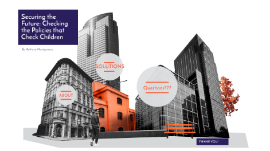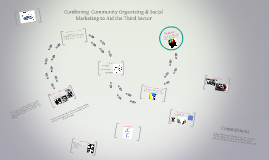White Paper Presentation
Transcript: White Paper Presentation Caleb, Jane, Jason, Jacob, and Sabina Blood Donation Hesitancy in the African American Community Abstract We will discuss the background... Types of blood donation How to donate blood, including requirements What sickle cell disease is and how it can be treated Disproportionate hesitancy to donate in the African American community and why their donations are important Why this hesitancy exists, including the stories of Henrietta Lacks and the Tuskegee Experiment ...and potential solutions Early education Establishing trust by leveraging trusted community centers as potential sources of information and donation sites Blood Donations Background Blood donations voluntary procedures that can save lives Two Types of Blood Donations: Whole Blood donations and Apheresis Compoents often removed from blood: platelets, red blood cells, white blood cells, and plasma Eligiblity requirements for blood donations Recommendations prior to blood donation African Americans make up 13% of the U.S. population, but less than 3% of blood donors Race and ethnicity has an effect on blood type Most transfused blood type is Type O, half of the African American population has Type O Sickle Cell Disease - Sickle Cell Disease: inherited red blood cell disorder - This disease is most common in African Americans - 1 in 13 African American people are born with sickle cell trait - 1 in 365 African American people are born with the disease - Cure for sickle cell disease: bone marrow trasnplant or stem cell transplant - The best donor matches have the same race or similar ethnicity as patient -Be the Match: their goal is to grow the registry and increase the number of patients who find matches Sickle Cell Disease Racial Disparity Why is there such a small percentage of Black donors? Tuskegee Experiment 1932 study to record the natural history of syphilis Followed 600 Black men (399 with syphilis, 201 without) over 40 years Researchers told the men they were being treated for “bad blood” By 1943, penicillin was the treatment of choice for syphilis and was becoming widely available, but the study participants were not offered treatment Many of the men died from syphilis complications, and several of their wives and children contracted the disease Henrietta Lacks Black woman visited Johns Hopkins Hospital complaining of vaginal bleeding in 1951 Doctors discovered a large, malignant tumor on her cervix Underwent radium treatments A sample of her cancer cells was retrieved during a biopsy and sent to a tissue lab Cell samples always died quickly, but Lacks’ cells doubled every 20-24 hours These cells have been used to study the effects of toxins, drugs, hormones, and viruses on the growth of cancer cells without experimenting on humans Tuskegee Experiment By 1980, the public revelation of the Tuskegee study in 1972 had reduced life expectancy among Black men over 45 by more than a year The study was responsible for over a third of the life-expectancy gap between older Black and white men in 1980 Disclosure of the study accelerated an erosion of trust in doctors and dampened health-seeking behavior and healthcare utilization for Black men Henrietta Lacks Tissue was removed from Lacks’ tumor without her consent and sent to a lab to be cultured Her children eventually learned that the cells and experiments that were performed with them led to the creation of a massive for-profit industry Lacks’ family lived in poverty and never received any of the financial benefits derived from their mother’s tumor cells No one ever asked her family for consent, even as they used Lacks’ name publicly, gave her medical records to the media, and published her cells’ genome online Issues and Effects Black patients consistently express less trust in their physicians and the medical system than white patients, are more likely to believe medical conspiracy theories, and are much less likely to have common, positive experiences in healthcare settings Possible Solutions Solutions Use of churches and community centers for education on need to donate and safety of process Build community trust and use as potential site for blood drives More Black spokespeople to build trust Evidence Evidence Nearly 80% of African Americans identify religion as important compared to only 50% of the general population 15% of African-Americans who are unaffiliated report attending religious services at least once a week, compared with only 5% of the unaffiliated population as a whole Similar to the push for vaccinations When respondents — whether Black or white — read that a majority of their racial group was eager to be vaccinated, they become significantly more willing to get a vaccine as soon as possible, with an increase of over five percentage points compared to the control Problems in the Industry Spain Case Study There are barriers that need to be solved such as the lack of intimacy in the donation act Solution: Sending thank you letters, allows the donor to feel

















